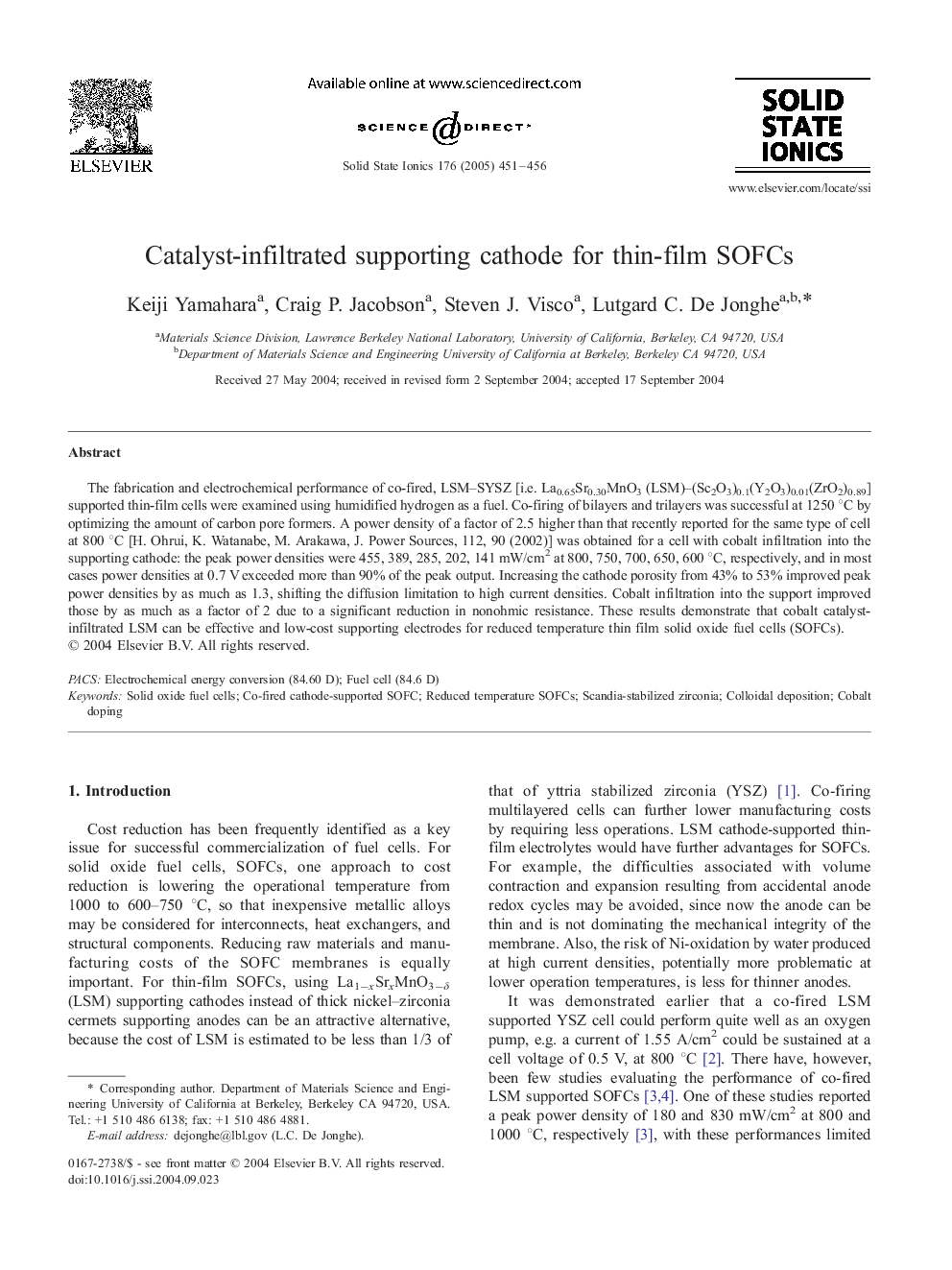| Article ID | Journal | Published Year | Pages | File Type |
|---|---|---|---|---|
| 9761747 | Solid State Ionics | 2005 | 6 Pages |
Abstract
The fabrication and electrochemical performance of co-fired, LSM-SYSZ [i.e. La0.65Sr0.30MnO3 (LSM)-(Sc2O3)0.1(Y2O3)0.01(ZrO2)0.89] supported thin-film cells were examined using humidified hydrogen as a fuel. Co-firing of bilayers and trilayers was successful at 1250 °C by optimizing the amount of carbon pore formers. A power density of a factor of 2.5 higher than that recently reported for the same type of cell at 800 °C [H. Ohrui, K. Watanabe, M. Arakawa, J. Power Sources, 112, 90 (2002)] was obtained for a cell with cobalt infiltration into the supporting cathode: the peak power densities were 455, 389, 285, 202, 141 mW/cm2 at 800, 750, 700, 650, 600 °C, respectively, and in most cases power densities at 0.7 V exceeded more than 90% of the peak output. Increasing the cathode porosity from 43% to 53% improved peak power densities by as much as 1.3, shifting the diffusion limitation to high current densities. Cobalt infiltration into the support improved those by as much as a factor of 2 due to a significant reduction in nonohmic resistance. These results demonstrate that cobalt catalyst-infiltrated LSM can be effective and low-cost supporting electrodes for reduced temperature thin film solid oxide fuel cells (SOFCs).
Keywords
Related Topics
Physical Sciences and Engineering
Chemistry
Electrochemistry
Authors
Keiji Yamahara, Craig P. Jacobson, Steven J. Visco, Lutgard C. De Jonghe,
